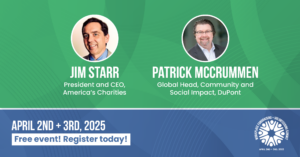Sarah Ford | December 12, 2014
Can Data Help Save Lives and Protect Vulnerable Populations?
The use of data to drive philanthropic decisions has been discussed at great length within the philanthropic sector over the past few years, and the Center for Disaster Philanthropy(CDP) has been captivated by all the energy around the topic. One of our founding principles is to transform the field of disaster philanthropy, and we have achieved some traction toward that goal. But over the past two years, we gradually realized that a key element was lacking in our tool kit.
That key element was funder data. More specifically, which disasters are funded, by whom, for what purpose, and with what goals in mind?
The beginning of an answer lies in our newly-released report, Measuring the State of Disaster Philanthropy 2014: Data to Drive Decisions (52 pages, PDF).
The report, the result of a partnership between CDP and Foundation Center, is the most comprehensive analysis of disaster philanthropy to date. As stated in the key findings section, the report “provides a snapshot of funding for disasters by the largest U.S. foundations.” Based on 2012 data, it is also designed to establish a baseline and serve as the foundation for a longer-term effort to collect and aggregate data from the philanthropic community. Subsequent reports will provide insights into more current and comprehensive trends on disaster giving.
Key findings from the report include the following:

Get Resources and Insights Straight To Your Inbox
Explore More Articles
For Fifth Consecutive Year America’s Charities Named ‘Best Nonprofit To Work For’
Washington, D.C. – April 1, 2025 – America’s Charities, the nonprofit that mobilizes the power of giving as a leading provider of volunteering, workplace giving,…
Read ArticleWorkplace Fundraising + Volunteering Summit (April 2nd and 3rd, 2025)
Join us in attending this virtual summit! The America’s Charities team is joining up with other leading voices in the workplace giving space for a…
Read ArticleThe Time to Act is Now
The results of the 2024 National Assessment of Educational Progress (NAEP) are in, and the findings are, in a word, heartbreaking. This assessment serves as…
Read ArticleGet Resources and Insights Straight To Your Inbox
Receive our monthly/bi-monthly newsletter filled with information about causes, nonprofit impact, and topics important for corporate social responsibility and employee engagement professionals, including disaster response, workplace giving, matching gifts, employee assistance funds, volunteering, scholarship award program management, grantmaking, and other philanthropic initiatives.




